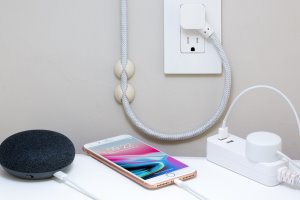Smart home connectivity: 3 steps to overcome major obstacles

Connected appliances, or sometimes referred to as ‘white goods’, have quickly grown to become the fourth largest category of smart devices, and they’re expected to dominate the smart home market in just two short years.
But with the rapid growth of the industry, says Steve Davidson, Steve Davidson, VP, Fortegra Warranty Group, the complexity of these devices, and their importance in the home, manufacturers and consumers are facing more and more obstacles in a connected future.
Concerns with complexity
Adopting smart home products into the home may not be as simple as one may think. The process and the products themselves can be complex and time-consuming — starting with the installation. While the prospect of smart home connectivity might sound appealing in the showroom, consumers have found linking them with and operating them through their home networks can be cumbersome without the aid of a professional.
To prevent consumers from feeling overwhelmed with smart home products, manufacturers are taking necessary actions to better educate consumers while simplifying the process from start to finish. But many vendors are finding that to be cumbersome themselves.
Additionally, when it comes time to repair an appliance, your average local repairman may not be capable of repairing the particular smart appliance and its new and unique technological design. This will then require customers to rely on and potentially overwhelm the repair services of the manufacturer. Not to mention, some repairs may not be of a mechanical nature, but of the digital operating systems, requiring tech support, another service the manufacturer now needs to provide for customers.
Three smart home solutions
As a result of these challenges, manufacturers are turning to new solutions and third parties to manage the process of implementing smart home devices — from installation to everything thereafter. This ensures smart appliances are worthwhile for consumers who are spending big bucks on the latest home tech. The following considerations will help improve customer satisfaction and retention rates:
- To simplify installations for customers, require that your appliances conform to the industry interoperability and compatibility standards. These uniform standards will make installation easier to grasp for the average consumer and any potential installation professionals. Customers will also be able to interface their new appliance better with the other smart appliances already in their homes from different manufacturers.
- Consider developing your own ‘smart repair’ service network or providing additional technical training for existing repair personnel. Having an IT centre for troubleshooting system errors, running security protocols, and addressing connectivity issues for customers would also boost your programme success.
- Many third-party administrators providers are now creating smart home device protection programmes as well that cover repairs and replacement, plus they provide tech support to help consumers navigate any connected home conundrums. Partnering with a provider will grant you access to these support services without having to develop and manage these programmes on your own. All of the benefits, with none of the burden.

Steve Davidson
Although the smart home market is growing, questions about product complexity, installation issues, and long-term maintenance have set some barriers for consumers and manufacturers alike.
However, with the help of system compatibility standards, improved repair services and tech support, manufacturers and consumers alike can truly take advantage of all the benefits smart home connectivity has to offer. When you add service contracts that offer product protection it becomes a complete package for consumers with added peace of mind.
The author is Steve Davidson, VP, Fortegra Warranty Group
Comment on this article below or via Twitter @IoTGN
